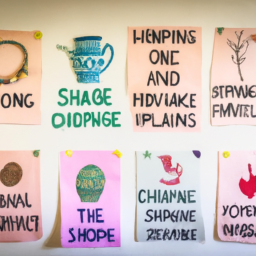Creative Design Guide: Inspiring Examples & Best Practices
Are you searching for outstanding examples of creative design? Whether you’re a designer, entrepreneur, or creative thinker, this comprehensive guide will help you explore innovative design ideas, discover modern inspirations, and master essential design principles. Dive into curated showcases and actionable tips for your next project!
What is Creative Design?
Creative design is the art and science of combining visual elements, concepts, and innovative thinking to effectively communicate a message or solve a problem. This discipline fuses graphic design, branding, digital layout, and strategic thinking, resulting in visually engaging and purposeful outcomes. Designers leverage creativity to craft memorable user experiences, impactful marketing campaigns, and unique product packaging, setting brands apart in a crowded marketplace.
- Visual storytelling and branding
- User-centric digital experiences
- Effective communication through visual hierarchy
Fundamental Principles of Creative Design
Understanding the core principles of design is essential for unleashing creativity and producing visually stunning work. Here are several key guidelines every designer should master:
Balance
Achieve harmony by distributing visual weight evenly across your design, using symmetry or asymmetry for different effects.
Contrast
Use contrasting colors, shapes, and textures to draw attention and create visual interest in your layout.
Hierarchy
Guide the viewer’s eye using size, color, and placement to prioritize information and direct focus where it matters most.
- Alignment: Keep elements organized for a clean, professional appearance.
- Proximity: Group related items together to show relationships.
- Repetition: Use consistent patterns, fonts, and colors to reinforce your message.
- Whitespace: Allow breathing room to highlight key elements and avoid clutter.
Showcase: Examples of Creative Design
To help inspire your next project, we present a curated collection of creative design examples spanning various industries. These case studies demonstrate how innovative ideas, thoughtful layouts, and unique visual identities can transform ordinary concepts into extraordinary experiences.
Brand Identity Redesign
By using bold typography, vibrant colors, and a memorable logo, this rebranding project elevated the client’s market presence and strengthened brand recognition.
Website UI/UX Overhaul
Modernizing the user interface with intuitive navigation, micro-interactions, and a mobile-first approach created a seamless, engaging digital experience for users.
Product Packaging Innovation
Eye-catching packaging with eco-friendly materials and creative die-cuts helped this product stand out on crowded shelves and appeal to eco-conscious consumers.
- Interactive infographics and data visualizations
- Minimalist poster designs that communicate messages at a glance
- Custom illustrations and hand-drawn elements for brand storytelling
- Creative layouts for print and digital magazines
Practical Tips for Boosting Creativity
Creativity doesn’t happen by accident. Here are actionable strategies to foster innovation and elevate your design process:
- Seek Inspiration: Browse design galleries, study art movements, and observe nature to spark new ideas.
- Experiment with Tools: Try different software, materials, or illustration techniques to expand your skillset.
- Collaborate: Work with other creatives to gain fresh perspectives and push your concepts further.
- Analyze Design Trends: Stay current with visual trends, such as minimalism, bold typography, or immersive animations, for contemporary relevance.
- Embrace Feedback: Share your work with peers or mentors and use constructive criticism to refine your designs.
- Keep Iterating: Don’t settle for the first draft—tweak layouts, color schemes, and details to achieve the best results.
“Creativity is allowing yourself to make mistakes. Design is knowing which ones to keep.” – Scott Adams
Conclusion
Creative design is a journey of exploration, inspiration, and continuous learning. By studying successful examples, applying essential design principles, and nurturing your creative instincts, you can craft visually compelling work that resonates with audiences. Remember, the best design is both innovative and purposeful—always aligned with your goals and audience needs.
We hope this guide has provided valuable insights and sparked fresh ideas for your next creative project. Keep experimenting, stay curious, and let your imagination lead the way!

0 responses to “Inspiring Examples: A Creative Design Guide for Modern Innovators”